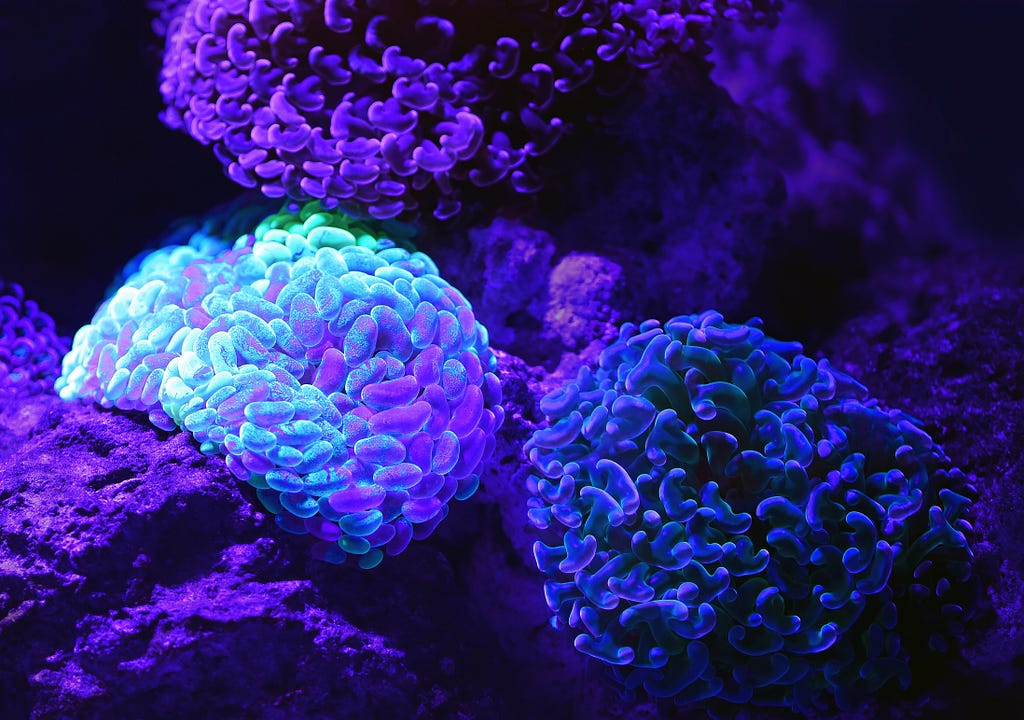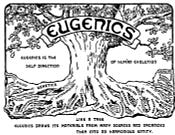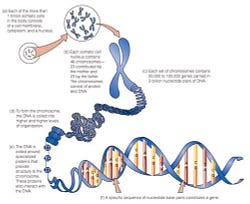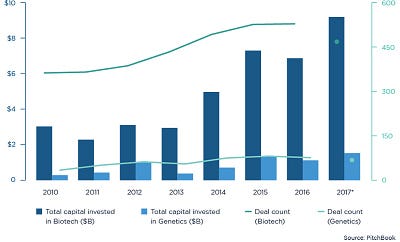Latest news about Bitcoin and all cryptocurrencies. Your daily crypto news habit.
 David Clode, Unsplash.comThere is grandeur in this view of life, with its several powers, having been originally breathed into a few forms or into one; and that, whilst this planet has gone cycling on according to the fixed law of gravity, from so simple a beginning endless forms most beautiful and most wonderful have been, and are being, evolved-Charles Darwin, The Origin of SpeciesThere is no scientific study more vital to man than the study of his own brain. Our entire view of the universe depends on it — Francis Crick, Co-Creator of The Double Helix Structure Of Human DNA
David Clode, Unsplash.comThere is grandeur in this view of life, with its several powers, having been originally breathed into a few forms or into one; and that, whilst this planet has gone cycling on according to the fixed law of gravity, from so simple a beginning endless forms most beautiful and most wonderful have been, and are being, evolved-Charles Darwin, The Origin of SpeciesThere is no scientific study more vital to man than the study of his own brain. Our entire view of the universe depends on it — Francis Crick, Co-Creator of The Double Helix Structure Of Human DNA
They say truth is stranger than fiction. I think fiction can be used to make the truth seem stranger. A bit like tinkering with nature to make it even more desirable. Changing the laws of nature is not a very new endeavor. In fact it is ancient and it is a discipline called Eugenics. In fact, Eugenics can be traced as far back as Plato who suggested applying the principles of selective breeding of humans as early as 400 BCE(source:Wikipedia)
Modern Origins
In a way, the term ‘survival of the fittest’ first laid out in Darwin’s theory of natural selection is a succinct explanation of Eugenics. Darwin, along with Alfred Wallace presented a paper on the concept of Natural Selection in 1858. This concept became the backbone of modern biology. Subsequently, Darwin published an influential book ‘On the Origin of Species by Means of Natural Selection, or the Preservation of Favoured Races in the Struggle for Life’ in 1859.
Inspired by Darwins work, the term ‘Eugenics’ was coined in 1883 by Francis Galton.
Old Wine In a New Bottle
Eugenics (/juːˈdʒɛnɪks/; from Greek εὐγενής eugenes ‘well-born’ from εὖ eu, ‘good, well’ and γένος genos, ‘race, stock, kin’)is a set of beliefs and practices that aims at improving the genetic quality of a human population. The exact definition of eugenics has been a matter of debate since the term was coined by Francis Galton in 1883. Broadly speaking, there are two types of Eugenics ie positive (encouraging the fit to breed) and negative(discouraging the unfit to breed). While nature has no such laws, humans are another species altogether. Not surprisingly, this technology is always embroiled in controversy.
Consider this: This year, there were a record number of Asian American figure skaters at the Pyeongchang Olympics. Japan ended up wining a gold and a silver for Yuzuru Hanru and Shoma Uno. Then, there were revelations by Adam Rippon about quite starvation in figure skating to have a lean frame that would enable him to compete with the other figure skaters who have mastered the quad jumps.
One of the reasons for success of many figure skaters is lean frame and minimal body fat sometimes hovering around 4%. Now, imagine if it was possible to reverse engineer such a body type using technologies such as CRISPR or genetic engineering. It would be like creating custom super heroes on demand. The problem is that not everyone can have access to such a disruptive technology.
It’s like taking over nature’s role in creation and evolution without giving everyone an equal chance.
Thus, Eugenics has evolved from human selection to gene selection and editing. The concept is an old idea but new discoveries such as the double helix structure of DNA and gene editing tools such as CRISPR have refocused attention on Eugenics.
The Advent of Molecular Biology
While DNA (deoxy ribonucleic acid) was discovered as early as 1869, its role in determining heredity was not known until 1943. Subsequently, James Watson and Francis Crick, in 1953, announced the double helix structure of DNA.
This discovery heralded a new revolution in molecular biology or a way of looking at biology at the cellular and sub-cellular level. Writing in Nature in 1961, William Astbury described molecular biology as:
“…not so much a technique as an approach, an approach from the viewpoint of the so-called basic sciences with the leading idea of searching below the large-scale manifestations of classical biology for the corresponding molecular plan..”
CRISPR CAS9
While genetic engineering is not a new field, a new editing technique called CRISPR CAS9 promises to herald a new revolution. From solving problems to enhancing the human species, it has a wide range of applications.
CRISPR is an abbreviation of Clustered Regularly Interspaced Short Palindromic Repeats. These are clusters of palindromic DNA sequences used by bacteria to overcome viral infections. Scientists used this natural mechanism to edit human DNA.
An enzyme called CAS9 is used as a pair of molecular scissors to cut the ‘bad’ DNA and then a type of RNA called guide RNA or gRNA guides CAS9 to identify the portion of defective DNA that need snipping. Thus, the faulty DNA sequence is removed.
Capital Chases The Future
Genetics has seen a steady surge of venture capital since 2010. As far as biotech is concerned, VC investments surpassed $10 billion for the first time. In 2017, 68 deals worth $1.5 billion were announced:
The new frontier for economic warfare is technology. There is a lot of capital lying idle in the world today. Capital that is chasing above market returns. This means a hunt for risk adjusted and hugely profitable investments.
From AI to genetics, there is a race among nations and businesses to unlock nature’s secret and reap profits of incredibly profound research. Of course, the corollary of such seismic changes is the global war for talent.
In fact, disruptive technologies can perpetuate a self reinforcing cycle where more investments attracts more talent and more talent results in new discoveries that attract more money.
Of Humans, Machines and Hybrids
Many modern technologies such as Artificial Intelligence, Gene Editing, Biohacking or creating cyborgs are extremely disruptive for the entire human species. These technologies have the capability to unleash Frankensteins that may be beyond the control of humans. They can tear apart the fabric of life and society as we know it today.
Of course, these technologies will also usher in a new era of increase in productivity, new methods of dealing with chronic diseases and solutions to deal with Artificial General Intelligence (AGI) gone rogue.
Undoubtedly, controversial becomes an understatement and volatility becomes the norm.
Recently, the MIT Technology Review published an article on how scientists are creating completely customizable yeast strain called Sc2.0. The human genome is far more complicated but that complexity is spurring a global race to replicate it.
While a certain segment of scientists ie computer scientists are busy creating a parallel universe called the virtual world, another section of scientists is busy recreating humanity through genetic engineering. Then there are those who are into biohacking or the use of machines to enhance the human body ie creating a hybrid of man and machine.
It is hard to say which endeavor is more exciting. But, the human capacity of replicating and altering nature is literally beyond imagination. Ironically, science fiction has become a guiding light or the fiction that has defined our vision for the future. Truth can be stranger than fiction but today science fiction is guiding our efforts to make the truth seem stranger. Many would say our efforts at biohacking may be premature but at least we are looking at a backup plan.
The implications of continued advances in genetic engineering and Eugenics on real life will be profound. Most importantly, man can direct his own evolutionary destiny. This also means that he will have access to technologies of mass disruption.
One of the most poignant books on this topic was written in 1896. It was called “The Island of Dr. Moreau” written by HG Wells. The book tells the story of a shipwrecked sailor landing on an island run by a mad scientist that carries out experiments to fuse humans and animals through vivisection. The book was a dystopian view and a work of fiction but it deals with a number of topics including emotions and empathy. It directs the reader, as I am, to consider the other side of technology i.e. morality.
Perfect By Design was originally published in Hacker Noon on Medium, where people are continuing the conversation by highlighting and responding to this story.
Disclaimer
The views and opinions expressed in this article are solely those of the authors and do not reflect the views of Bitcoin Insider. Every investment and trading move involves risk - this is especially true for cryptocurrencies given their volatility. We strongly advise our readers to conduct their own research when making a decision.




